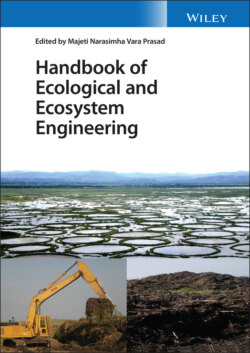Читать книгу Handbook of Ecological and Ecosystem Engineering - Группа авторов - Страница 25
2.2.3 Unfavorable Texture and Stoniness
ОглавлениеDescription of the marginality factor: Soil aggregates play an essential role in accumulating and stabilizing soil organic matter since they provide physical protection to soils [77]. Also, the soil's physical structure is essential for organic carbon storage [78]. So, topsoil's heavy clay texture affects plant growth and crop parameters and is directly related to plant nutrient supply, soil moisture conditions, and rooting conditions [10]. Soil texture affects the balance between water and gases, which is very stable over time independent of soil management [79]. Soil texture plays an important role in plant tolerance to drought at the germination stage [61]. Stoniness and dryness may influence water and oxygen availability in the root zone and soil stability [10].
Revitalization by ecosystem engineering: Soil ecosystems dominated by fungal communities show higher carbon retention than soil communities dominated by bacteria. Generally, afforestation is a suitable technique to improve carbon sequestration on marginal lands [80]. Switchgrass and giant reed are well adapted to a broad range of soils with different relative abundances of clay, silt, sand, organic matter, and coarse material [61]. Most mine soils are marginal soils with no topsoil, consisting of mine spoils whose properties can range from loose, coarse‐textured material with many rock fragments to highly compacted clayey material [81]. Industrial crops like Miscanthus spp., giant reed, switchgrass, P. purpureum, and others can tolerate mine tailings and produce quality biomass for energy and other purposes such that soil properties are restored [82–85]. Also, soybeans can be easily adapted to a variety of soil textures [86].
